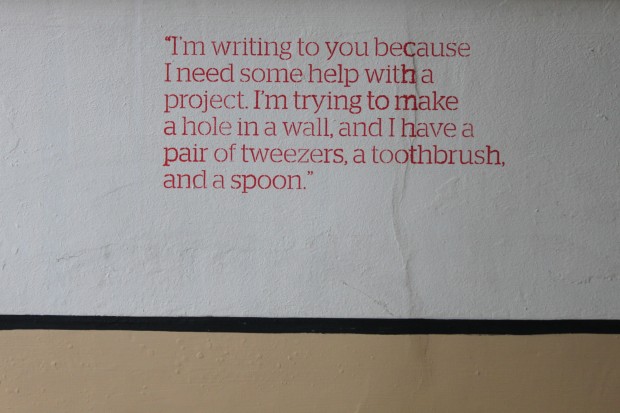The great passion of our grafic designer Anna is design. In October she visited the Biennale Interieur in the Belgian city of Kortrijk. For Pablo & Paul Magazine Anna writes about her impressions of the Biennale: Reflections on housing today.
written by Anna Jęchorek
The Biennale Interieur 2014 in Kortrijk, which began on 17th October, once again took over the small Belgian city for ten days. As usual, the Kortrijk Xpo hosted new designs brought to market over the previous two years. Hours could be spent wandering around halls filled to the brim with innovative chairs, tables, sofas and lamps. As with every edition of the biennale, the exhibition attracted crowds of industry professionals, designers, interior decorators, architects etc. However, thanks to the initiative of biennale president, Lowie Vermeersch, this year’s event was also made accessible to a wider audience. Exhibitions hosted in the city centre were aimed at providing a space for people from different walks of life to enjoy wider reflection on the concept of the home, after viewing the endless novelties on offer at the Xpo complex.
Compared with previous years, the 2014 biennale distinguished itself by taking a critical approach to interior design and contemporary housing, conceived by guest cultural curator, British architect and author Joseph Grima and his Space Caviar collective. The very title of the biennale, The Home Does Not Exist, offered something of an contradiction for an interior design fair, inviting visitors to consider some of the wider problems with housing today.
The exhibitions staged according to Grima’s conception were expositions not containing any objects of daily use. Instead, the spaces arranged by the cultural curator of this year’s biennale, offered charts and statistics revealing to visitors various factors effecting housing today, such as: where most people in the world live, what housing costs in particular cities, what that housing in those cities looks like, and finally, where the most favourable conditions for various social groups to live can be found. Grima explained the fundamental goal of the exhibitions in an interview: ‚We wanted to look at the idea of the home not as a place of intimacy, but more as a space where a series of forces – economic, cultural, technological – converge.‘
Grima arranged two complimentary exhibitions for the Biennale Interieur, calling project The Quantified Home. The first exposition, Theatre of Everyday Life, consisted of a rectangular structure of metal modules, built outside the Kortrijk Xpo. This was designed in such a way that biennale visitors would gradually, passing along subsequent sections, move through images of homes drawn from social media, and explore statistics showing how housing realities have changed over the years.
The second exhibition was housed at the former Broel School in Kortrijk, which is awaiting demolition. As with Theatre of Everyday Life, the curators prepared a path through the building for visitors. Using yellow electrical cord woven through perforations in the walls, a path was laid for visitors, taking them on a journey through a strangely familiar territory. Moving along the indicated route guests encountered quotes form various books, stenciled onto the walls. The texts referred to events that changed conceptions of the home. The quotes were arranged chronologically, which allowed visitors to easily visualise for themselves the changing history of housing. Large charts accompanied the quotes, showing various factors effecting contemporary concepts of the home.
Looking through windows onto the courtyard viewers could see how the prices of housing in various cities differed. The graph was made with leaves, different sizes of pile indicated the proportional house prices in each city. Another interesting idea, illustrating the factors effecting housing, was the use of construction tubing wrapped at various points with red wire. These formed highly illustrative graphs on the walls. In another ingenious move, statistics were shown the school roof detailing the yearly growth in Airbnb use since its foundation.
At the end of the intellectually demanding walk visitors were invited to an old gymnasium to enjoy Roomba Ballet: a performance of robotic vacuum cleaners. The performance involved six ‚female‘ and six ‚male‘ vacuum cleaners, who executed a choreographed dance to the music of a Viennese Waltz.
After viewing this extraordinary performance each visitor was convinced that changes to the perception of the home as a place of existence are sudden and irreversible. In an interview Joseph Grima underlined his motivation, to explore: ‚What transformations have taken place even in the brief timespan of our lives of thirty, forty years – and to speculate also on the directions it’s headed and how design can once again be relevant to this.‘




